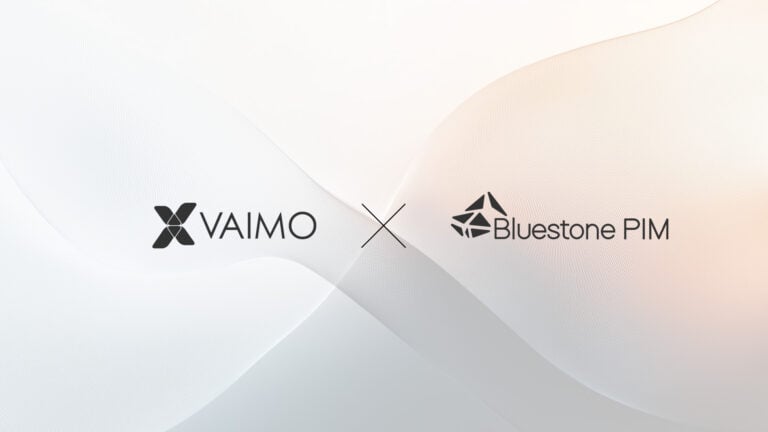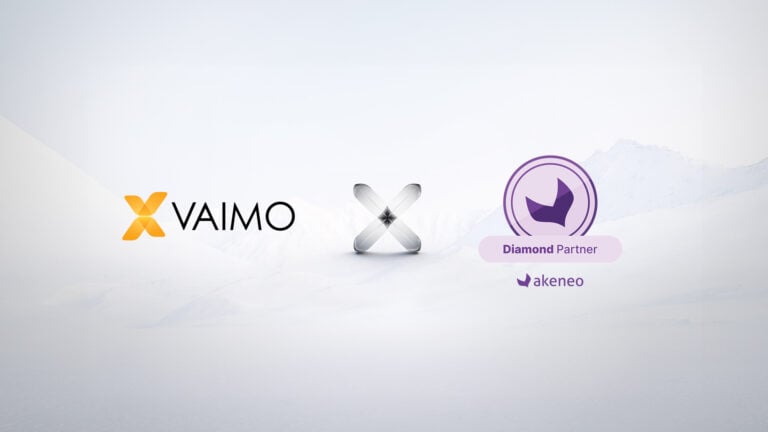We live in a world where everything is digital, either directly or indirectly. Consumers use a multitude of digital channels and touchpoints. And whether they’re interacting with your business over email, on social media, or chatting with you directly on your site, they expect a seamless experience.
Delivering a smooth and consistent experience is essential for ecommerce success, and consumers have grown hypersensitive to glitches in the matrix. This puts significant pressure on manufacturers, brands, and retailers. Managing and orchestrating content and product data across all of these channels can get complex, really fast.
According to research from PWC, 90% of consumers expect consistent interactions across multiple channels, and 86% of buyers are willing to pay more for a great and consistent customer experience. Thankfully, there are solutions to help businesses streamline content across multiple channels and deliver a consistent customer experience.
In fact, to create this coveted, coherent customer experience, there are a number of different tools that you can use. The digital world is full of abbreviations, and navigating all of the different systems and solutions can be challenging. In this article, we’ll look closer at PIM (Product Information Management) and DAM (Digital Asset Management) solutions, their role in content management, and how they relate to ERP (Enterprise Resource Planning) and PLM (Product Lifecycle Management) systems.
THE IMPORTANCE OF MULTI-CHANNEL CONTENT MANAGEMENT
Let’s say, for example, that you are running a marketing campaign for a new product line. You will need imagery for it, and then you will need to format this imagery for each channel it will be used in, such as social media, email, mobile, web, POS touchscreen, apps, billboards, etc. They each have different requirements.
To do this efficiently and accurately at scale requires an integrated process, as siloed operations both take time and create room for human error. This requires a tool that manages both authoring and publishing across all of your channels. However, very few tools can do this as many CMS platforms are made for web-based content only. Also, most asset management systems are not very well integrated into a CMS. A tool that does solve this challenge is Adobe Experience Manager (AEM).
To learn more, check out our article: How AEM Streamlines Multi-channel Content Management
CATALOG MANAGEMENT AND MULTIPLE CHANNELS
We have been talking about the need to integrate the process of content management.
Now, let’s look at the catalog management aspects of this challenge. Whether you’re already running an established ecommerce website or you’re looking to kick-start your ecommerce business, understanding the role of catalog management and product information data is key to digital success.
WHAT IS CATALOG MANAGEMENT?
A catalog consists of categories and products, where most of the data sets are at the product level. The product data includes everything related to the broad digital product experience, such as exploring, comparing, testing, measuring, sizing, looking at images and videos, as well as aspects related to the purchase experience, such as inventory, taxes, pricing, compliance, weight, etc.
There are various data types involved here, such as price, SKU, name, images, and a product sheet. This data is being generated and managed in many different systems. And while some data is created early, even before production, the information also evolves, changes and grows over the lifetime of products.
How the data is published also depends on the channel, touchpoint, and use case. Images are needed for the mobile-optimized website; the price needs to be printed on a label printer with sales tax, 3D models need to be rendered, and so on. It can be challenging for businesses to know how different integrated systems fit into an overall strategy.
Catalog management includes managing all these different aspects of categories and products.
|
Want more advice on this topic? |
THE TOOLS FOR MANAGING YOUR PRODUCT CATALOG
To understand the different tools needed for catalog management, it’s helpful to first look at a product’s lifecycle. This includes all stages, from where it’s manufactured to where it’s sold and where the journey eventually ends. Applying a product data point of view to the product’s whole lifecycle makes it easier to understand what each tool does – and when it’s needed.
PLM – PRODUCT LIFECYCLE MANAGEMENT
Product lifecycle management (PLM), sometimes called a PDM (product data management) system, refers to the process of handling a product as it moves through the stages of its lifecycle: development, introduction, growth, maturity, and decline. If you’re manufacturing the product, this is where everything starts, as the technical data in the PLM system helps optimize the product development process. We can use the example of a car to illustrate this. A car’s design is first conceived, then developed, then prototyped. After the prototypes are approved, they are manufactured and need to be supported and perhaps re-designed or retired. The PLM supports all of these stages, ensuring that the product is developed, manufactured, and maintained in the best and most cost-effective manner.
Related reading: PIM, DAM, ERP, and PDM – What’s The Difference?
ERP – ENTERPRISE RESOURCE PLANNING
Enterprise resource planning (ERP) is the system companies use to manage and integrate different business parts and data. This is where a product becomes an inventory, has an SKU, a cost, a price, etc. If your ecommerce business is relying on suppliers, the ERP is often the starting point.
The ERP can be described as a unified database and system of applications bringing together finance, supply chain, HR, customer support, and other relevant parts of the business in one system.
The most commonly used ERP systems are SAP, Microsoft Dynamics, and Navision. Many companies also create their own custom solutions.
Related reading: What is PIM – The Benefits of Product Information Management
PIM – PRODUCT INFORMATION MANAGEMENT
A Product information management (PIM) system manages, maintains, and updates all the information needed to market and sell products through different distribution channels. This is usually where companies store most of their product information.
“Companies who invest in building a strong foundation of complete product information find a positive ripple effect through all components of their digital commerce infrastructure that has a tangible impact on their bottom line.”
– Ali Hanyaloglu, Head of Global Product Marketing at Akeneo
The PIM system takes data from the ERP. It then enriches it with product descriptions and other information so that customers can access compelling product information that is consistent across all channels. PIM uses data from both the PLM and the ERP system and functions as the single source of truth for sales, marketing, and other relevant departments. The focus of the PIM system is mainly a commercial one, and it’s used to enrich and orchestrate product data to create coherent and compelling customer experiences. Vaimo is a certified partner of the world’s leading PIM systems, Akeneo and Inriver.
Related reading: The 5 W’s of PIM – and How to Apply Them
DAM – DIGITAL ASSET MANAGEMENT
The Digital asset management (DAM) system stores and organizes all digital assets in one centralized place. This is crucial for amplifying the creative files like images and videos and making the most out of the content you create. A DAM is a content sharing and storage solution for digital assets and is tailored for images, videos, audio, documents, logos, and presentations – rather than text. Many DAM systems have built-in editing tools for editing. At Vaimo, we work with different DAM solutions, where Adobe Experience Manager (AEM) assets is the most common. Other popular DAM systems include Bynder, Cloudinary, Scene7, Fotoware, and Mediavalet.
WHAT HAPPENS AT THE END OF A PRODUCT’S LIFECYCLE?
Product lifecycle management is crucial to business success. Even when you stop selling something, you never want to delete anything in terms of historical data, sales data, return data, etc. You only want to delete the data that is of no value and keep the rest. A good DAM tool helps you with this by cleansing the data and only keeping what’s relevant. It also enables you to keep track of assets, licenses, and rights to use things like campaign photos and other collateral.
How Vaimo Can Help
At Vaimo, we can provide the strategic insight to help you increase your success in a multi-channel world. We have more than 10 years of experience in integrating business and data systems, across both B2B and B2C industries.
Our approach will always be unique to your business, involving a thorough analysis of your current channels and collaborative dialogue about best integrating your systems.
Talk to our team of experts to learn more about streamlining content and data management. Reach out to Vaimo today—we’re here to help!








